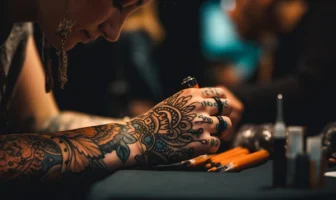
Culture and tradition are essential because they give us glimpses of the past. By taking the time to learn about them, we gain inklings of how different customs came to be. Not only do we learn what living was like in years gone by, but how the past influences the present. Traditional Attire is a recognizable aspect of a nation.
Its people shape a land’s history. By identifying tribes, trade routes, and boundaries, we find out how various nations formed and how its people led different lives centuries ago. We also learn about what customs were deemed important enough to be passed on from one generation to the next. Some countries have unique items of clothing as per their customs and traditions. There are many cultures and traditions which attracts people in their own way. There are multiple sources and fields of culture; they can assign to the forms of the pictorial heritage of an appropriate culture. Every people represents a unique culture and traditions of their nations and their beliefs towards their own faith by their traditional attire.
Culture is important because it forms a part of a person’s identity. Traditional attire often evolved for practical reasons but has remained popular as a cultural indicator. Culture and Traditions represent not only the interest of people but also their respect towards their own country. Although people are becoming renovated today, hold on to the virtuous values and proclaims the celebrations according to procedures. A tradition is a profession or practice enacted down within a group or organization with figurative purpose or special importance with roots in history. Also, tradition is a more precise term used to represent an event/ritual that is usually followed by selves or social functions on a certain occurrence.
In these days of globalization, economy flights and social media, focus on culture and tradition is vital to retain a sense of identity, pride, and belonging. One instantly recognizable aspect of a nation is their traditional dress.
Some countries have unique items of clothing.
Here are three examples:
Scotland

Scottish people have worn kilts since the early 1700s. Kilts are garments or traditional attire that resemble a pleated knee-length skirt and made from a woolen tartan cloth. Tartan is a plaid pattern, with different designs signifying the clan of the wearer. The tartan fabric was also used for a cloak draped over one shoulder. They were worn by men who wanted to show their patriotism. Jeans or mild tights below a skirt or dress.
These days, men and women wear kilts, often when performing cultural activities, like sword dancing and highland games. While some men still pair it with a cloak, it is more common for Scots to wear a cotton shirt paired with some ghillie brogues.
Philippines
The Philippines is an archipelago, comprised of different islands, each with its own vibrant culture. Two traditional items of clothing hailing from this country are the Barong Tagalog and Baro’t Saya, the national attire for men and women, respectively.
The Barong Tagalog reflects the influences other cultures have had on Filipino culture. Historically, the neckline was round, and the overall look of the Barong was loose and long, with the hemline reaching the wearer’s thigh. These were often matched with loose trousers. Traditionally, the Barong was made from pineapple fiber. In Filipino society, it is a standard formal attire, particularly at matrimonies. Less formal alternatives are used in schools, academies, and duties. Like other popular clothes, the way of the Barong Tagalog and the abettors worn with it conversed with the status of the personality wearing it.
The Baro’t Saya, on the other hand, has many iterations. The most popular of which is the Filipiniana or the Maria Clara dress. The attire is made up of four pieces: the camera which is a collarless blouse; the scarf, which goes around the woman’s shoulder and is tied at the front; the sea, which is the skirt; and the tapis which is a knee-length material that goes over the skirt.
Japan

The Japanese Kimono is a traditional garb that dates back to the Heian Period from 794 to 1185. The material is constructed in a T-shape that wraps around the wearer’s body. Throughout history, it was accompanied by different garments, one of which is the obi, a wide sash around the waist. Kimonos are worn for different occasions and are made up of silk and synthetic fabrics. kimono with more simple colors and designs (like russet leaves), and kimono with more shaded colors and various layers, are preferred.
As the years passed, the designs of the Kimono became more intricate and livelier. The seasons also affect the type of Kimono worn. During the colder seasons, it is typical for the Japanese to wear ones made from heavy silk. When summer comes, they wear the yukata. Both versions are paired with sandals. Kimonos are traditionally built from a particular bolt of fabric termed tanmono. Concurrent kimonos that are created with less-expensive easy-care materials such as rayon, cotton, polyester, and other artificial fibers, are more normally worn now in Japan.
Traditional Attire adds to the rich tapestry of cultures and customs that make the world fascinating. By remembering the past, younger generations can design new and exciting variations whilst maintaining their cultural roots. The Japanese are usually identified for their legendary art and its ability to transform simplicity into imaginative designs.
Read Also:




























